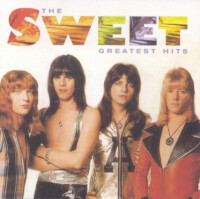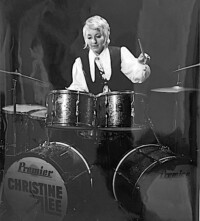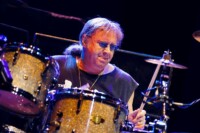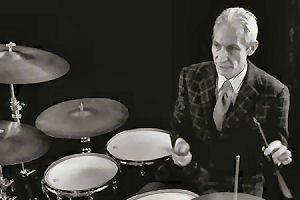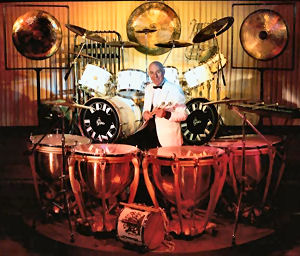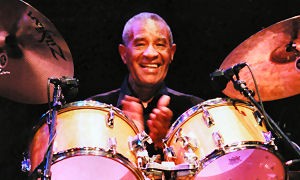 Maxwell Lemuel Roach was a pioneer of Bebop along with Kenny Clarke but he played all sorts of music. He was born in Newland, North Carolina but there is a discrepancy between the ‘official’ birth date and the one his people give out. The family Roach say he arrived on January 8th, 1925 but officially he was born almost a year earlier on January 10th 1924. The family moved to Brooklyn when he was four years old (or five depending on who you believe) where his mother was a gospel singer, and young Max became an accomplished pianist and a bugler. By 10 years old he was playing drums in a gospel band and when he was 18 (or possibly 17?) in 1942, he filled in for Sonny Greer with Duke Ellington at New York’s Paramount Theatre at 43rd and Broadway. And, around this time he started checking out the opportunities afforded by NYC jazz clubs and consequently his first recording was with Coleman Hawkins in December 1943.
Maxwell Lemuel Roach was a pioneer of Bebop along with Kenny Clarke but he played all sorts of music. He was born in Newland, North Carolina but there is a discrepancy between the ‘official’ birth date and the one his people give out. The family Roach say he arrived on January 8th, 1925 but officially he was born almost a year earlier on January 10th 1924. The family moved to Brooklyn when he was four years old (or five depending on who you believe) where his mother was a gospel singer, and young Max became an accomplished pianist and a bugler. By 10 years old he was playing drums in a gospel band and when he was 18 (or possibly 17?) in 1942, he filled in for Sonny Greer with Duke Ellington at New York’s Paramount Theatre at 43rd and Broadway. And, around this time he started checking out the opportunities afforded by NYC jazz clubs and consequently his first recording was with Coleman Hawkins in December 1943.
Even though Kenny Clarke was ten years older than Max Roach they were friends and jammed together at Minton’s Playhouse in Harlem. These after-hours jams in the early forties gave rise firstly to the Bebop movement then to modern Jazz. Along with Jo Jones, Max and Kenney had a big hand in popularising something which we now very much take for granted, although at around the time America entered the war it was hugely influential, important and different. I’m talking about the physical and geographical movement of the rhythmic pulse of time-keeping away from those relentless, danceable and unavoidable solid crotchets on the bass drum to the ‘feathered’ bass drum beats and ‘ten to two’ rhythm on what would soon be called the ‘ride’ cymbal. This left holes in the rhythm for accents to add dramatic effects throughout the music for the bass drum, snare drum and even the crash cymbal. It was completely revolutionary and when Max Roach’s important records with Charlie Parker were released in late 1945, drummers were awestruck and even frightened by them! Stan Levy was one of those who was overawed and came to realise that because of Max, drumming was no longer just a matter of keeping time – it was playing music. It was only certain journalists who called the music Bebop, but the guys actually playing it never labelled it anything. It was simply ‘Modern Music’ to them.
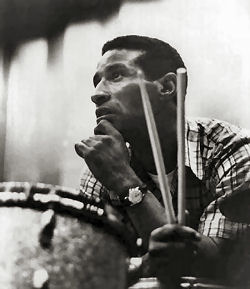 Max Roach was without a doubt not only one of the first to play Bebop but also to play swinging jazz pieces in waltz-time. Besides his stint with Charlie Parker he played with Stan Getz, Eric Dolphy, Billy Eckstine, Dizzy Gillespie, Thelonious Monk, Coleman Hawkins, Booker Little, Charles Mingus, Sonny Rollins, Duke Ellington and Miles Davis. He also found time to lead his own bands and famously play with Dinah Washington at The Newport Jazz festival and make musical statements about African American’s Civil Rights.
Max Roach was without a doubt not only one of the first to play Bebop but also to play swinging jazz pieces in waltz-time. Besides his stint with Charlie Parker he played with Stan Getz, Eric Dolphy, Billy Eckstine, Dizzy Gillespie, Thelonious Monk, Coleman Hawkins, Booker Little, Charles Mingus, Sonny Rollins, Duke Ellington and Miles Davis. He also found time to lead his own bands and famously play with Dinah Washington at The Newport Jazz festival and make musical statements about African American’s Civil Rights.
When I first began to pore over drum catalogues I remember being impressed by Max Roach’s Broadkaster snare drum in the Gretsch 1954 brochure, not necessarily because he had a signature model, but because it was so obviously different to everything else Gretsch made. Up until then if (say) Buddy Rich in the US, or Jack Parnell in the UK had a snare drum, it would simply be one of the parent company’s regular drums with their name on it – Max’s wasn’t though. It actually was a size they didn’t otherwise make and necessitated their engineers coming up with special tube lugs for it.
There have long been conflicting stories about exactly how the Roach drum depth came about. Max says it was the sound he’d always been looking for whereas others say it was because of the way Gretsch sliced their drum shells from a much longer tube (which is how Jasper who provided the shells made them), there was often a shallow shell section left over. And of course, if there could be a use for these narrow fillets from the very end of the tubes, then great. Initially the Max Roach drum was 5” deep (which wasn’t too unusual), but eventually its shell was slimmed down to 4”.
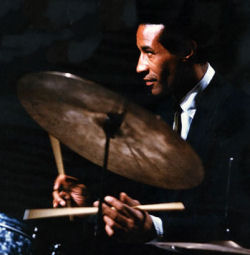 Max Roach, like many other ‘modernists’ used a 20 x 14” bass drum (which was the result of a suggestion by Davey Tough to the Gretsch drum company as early as 1948) along with a 12 x 8” and a 14 x 14” floor tom (which was first seen in the 1954 catalogue). This was rounded off with the ‘signature’ snare-drum, complete with name plate, internal damper, feather-touch ‘Micro-Sensitive’ strainer and 3-ply maple/poplar/maple shell. Sometimes these drums were thin-shelled but once Max had left the company, his drum was made from a 6-ply Jasper shell and renamed the ‘Progressive Jazz’ (although strangely you couldn’t actually get it with Gretsch’s ‘Progressive Jazz’ set until 1961!).
Max Roach, like many other ‘modernists’ used a 20 x 14” bass drum (which was the result of a suggestion by Davey Tough to the Gretsch drum company as early as 1948) along with a 12 x 8” and a 14 x 14” floor tom (which was first seen in the 1954 catalogue). This was rounded off with the ‘signature’ snare-drum, complete with name plate, internal damper, feather-touch ‘Micro-Sensitive’ strainer and 3-ply maple/poplar/maple shell. Sometimes these drums were thin-shelled but once Max had left the company, his drum was made from a 6-ply Jasper shell and renamed the ‘Progressive Jazz’ (although strangely you couldn’t actually get it with Gretsch’s ‘Progressive Jazz’ set until 1961!).
This Gretsch six-ply era introduced the 18 x 14” bass drum and even though there were still pictures of him in the catalogue (possibly because it could evidently take three years to prepare them) the actual Max Roach drum disappeared from it and by 1962 he began to be seen pictured behind Ludwig drums. Max was with Premier in 1968 and also endorsed Meazzi Hollywood drum sticks, although he appears to be on the front of their 1970 catalogue as ‘M.R.’ We’re told he actually used a Meazzi ‘Multisound’ pedal floor tom with his Ludwig set!
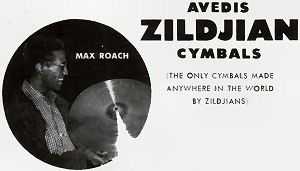 Max Roach cited Sid Catlett as being his main source of inspiration and not content with having had a hand in inventing Bebop in 1950 he enrolled at the Manhattan School of Music to study classical percussion! Incredibly he didn’t finish the course having been told by his tutors that his technique was wrong for it. This didn’t stop him going on to play with The Boston Symphony Orchestra, The Alvin Alley Dance Theatre, write music for the theatre and teach at Amherst College. He also played some hip hop with ‘Fab Five Freddy and the New York Break Dancers’.
Max Roach cited Sid Catlett as being his main source of inspiration and not content with having had a hand in inventing Bebop in 1950 he enrolled at the Manhattan School of Music to study classical percussion! Incredibly he didn’t finish the course having been told by his tutors that his technique was wrong for it. This didn’t stop him going on to play with The Boston Symphony Orchestra, The Alvin Alley Dance Theatre, write music for the theatre and teach at Amherst College. He also played some hip hop with ‘Fab Five Freddy and the New York Break Dancers’.
Max was philosophical about his achievements and he told the New York Times in 1990: “You can’t write the same book twice. Though I’ve been in some historic musical situations I can’t go back and do that again. And though I run into artistic crises they keep my life interesting.”
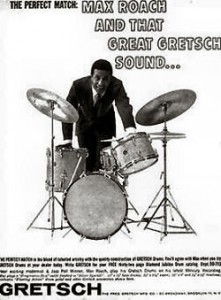 He told Mike Zwerin in 1988 that he was proud of having raised the profile of the drums:
He told Mike Zwerin in 1988 that he was proud of having raised the profile of the drums:
“I always resented the role of the drummer as [being] nothing more than a subservient figure. The people who really got me off were dealing with the musical potential of the instrument.”
For him a drum solo had to tell a story and his playing inspired the opening to Brian Bennett’s ‘Little B.’ solo recorded with the Shadows in 1962.
He’s had more awards from around the world than you could shake a stick at along with eight honorary doctorates and there’s even a park in Brixton, London named after him.
To hear him at his best listen to the album ‘Rich and Roach’ and also try ‘Birth of the Cool’ with Miles Davis and ‘I Had A Dream’ where he drums along with Martin Luther King’s famous 1963 speech. Also check out ‘Percussion Discussion’ with Charles Mingus, ‘Money Jungle’ also with Mingus and Duke Ellington and finally ‘The Drum Also Waltzes’ on Neil Peart’s album ‘Burning for Buddy’.
Max Roach died in Manhattan on August 16th 2007
Bob Henrit
May 2014

